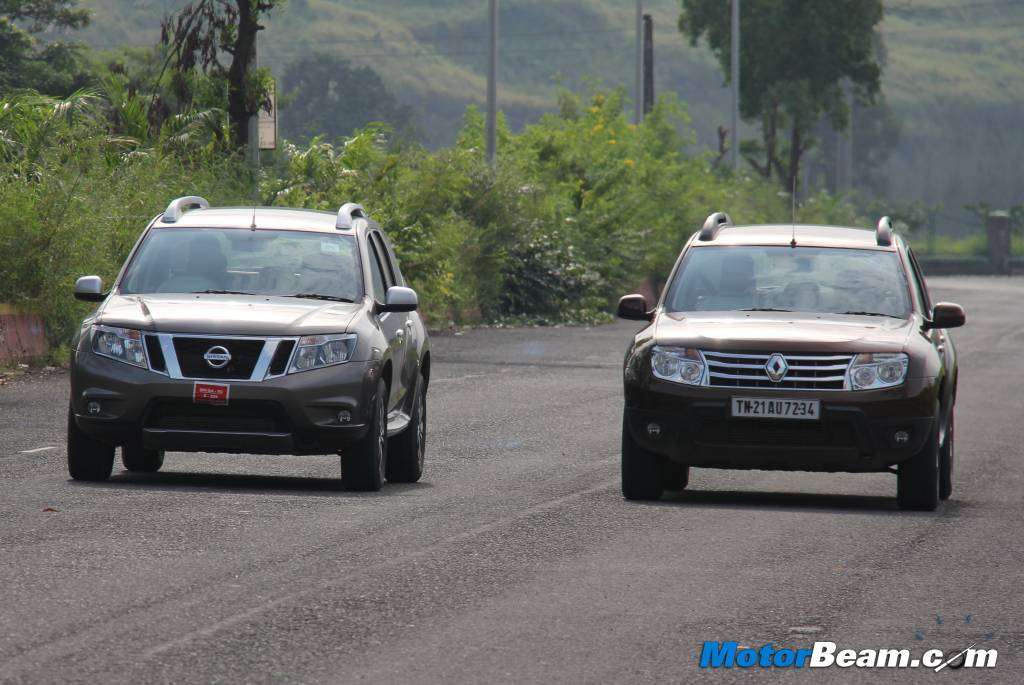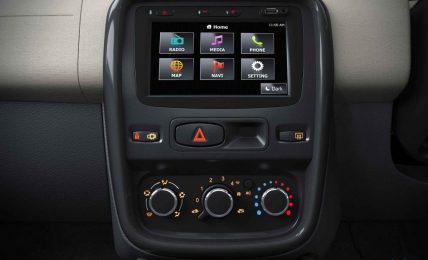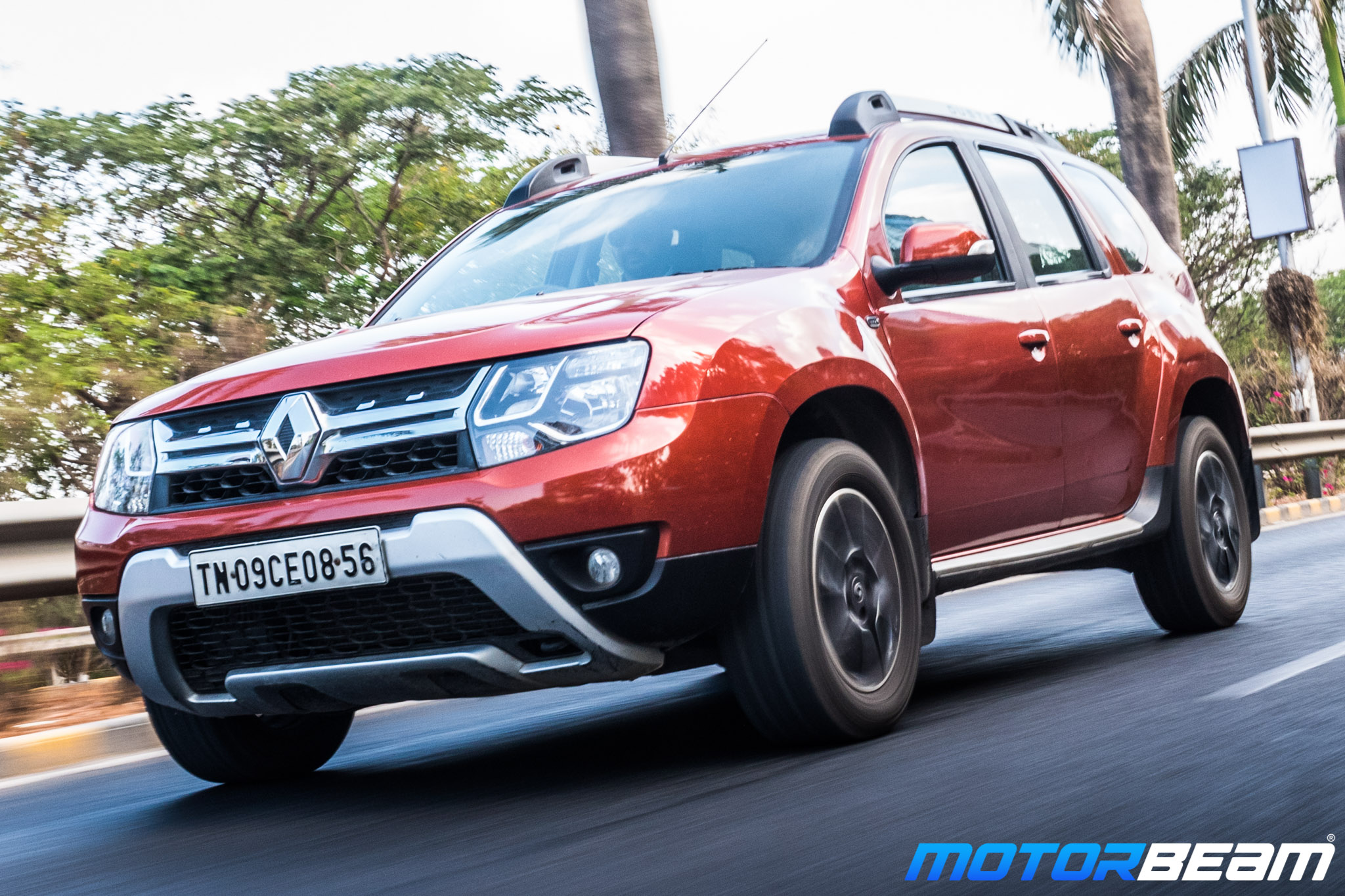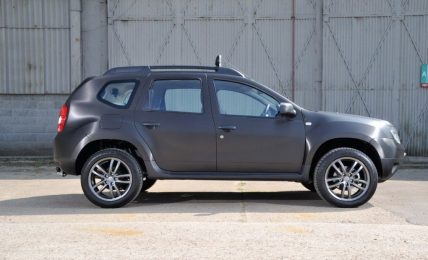Shootout – Renault Duster vs Nissan Terrano
Price OTR Mumbai : Rs. 9.04-14.14 lakhs (Renault Duster), Rs. 11.67-15.13 lakhs (Nissan Terrano)
Both the SUVs are identical in terms of mechanicals but are visually different.
We all are aware about the badge engineering strategy Renault-Nissan alliance has taken for the Indian market to churn out significant volumes. We have seen the sales performance of the Nissan Micra/Renault Pulse and Nissan Sunny/Renault Scala in our market, which doesn’t overwhelm the segment to which they belong. However, the Renault Duster came and lifted the fortunes of the company to the next level. Thanks to increasing demand in the compact SUV segment, the Renault Duster has been accepted very well by the Indian audience. Now that the badge engineered Nissan Terrano has been launched in our country with a slightly premium positioning, everybody is keen to know about the real differences between the two SUVs. So without any further delay, we pit both the cousins head to head and explore the differences between the two.
[flickr size=”center” float=”medium”]http://www.flickr.com/photos/motorbeam/10187746494/[/flickr]
Styling – While the rest of the badge-engineered Renault-Nissan products look more or less the same, the Nissan Terrano is the one that gets significant changes over the Duster. Nissan has provided sheet metal changes on the Terrano, which reflects a different attitude altogether when compared to the Duster. The front profile of the Terrano is more angular and pointed, whereas the Duster gets more rounded elements. The Duster gets a simple three slat chrome grille blending with the double barrel headlamps that are squarish in shape, on the other hand, the wide Terrano grille follows the SUV heritage of Nissan supported by rather edgy set of headlamps.
[flickr size=”center” float=”medium”]http://www.flickr.com/photos/motorbeam/10187898576/[/flickr]
The Duster bonnet gets a U-shaped line, while the Terrano bonnet is treated with straight lines pointing towards the grille. The lower half of the front end gets black cladding on the Duster but the Terrano continues with the body colour with a different fog lamp housing design. On the side profile, again you will see sharper styling elements on the Terrano such as chiseled pattern on the alloy wheels, strong character line running straight compared to the Duster’s mild U-shaped crease. The roof rails are flatter on the Terrano and the B, C-pillars are blackened out for better contrast to the body. Brawny wheel arches remain as it is on both the SUVs.
[flickr size=”center” float=”medium”]http://www.flickr.com/photos/motorbeam/10187744894/[/flickr]
The rear profile of the Terrano looks busy and flashy when compared to the Duster’s bold appearance at the rear. The Duster’s tail lamps are simple and small, whereas the Terrano gets big sized cluster, which completes the appearance at the rear. The number plate housing on the Terrano gets a triangular shape without any badging on the chrome garnish like the Duster. The rear bumper gets slightly tweaked on both the SUVs with different setup of reflectors. Overall, the Terrano looks sharp and suited up, while the Duster looks brute and lusty. In the styling department, Terrano takes the cake.
[flickr size=”center” float=”medium”]http://www.flickr.com/photos/motorbeam/10187845345/[/flickr]
Interiors – After comparing the drastic exterior changes, the interior styling looks mildly updated on the Terrano. The dashboard gets beige/black dual tone colour scheme on both the offerings but on the Terrano, you get more of beige on the lower part of the dashboard, which is black in the Duster. The Terrano also gets beige theme on the doors compared to the black ones on the Duster. The top of the dashboard is finished in black where you get rectangular shaped AC vents on the Terrano and circular ones on the Duster. The storage space on the top is covered with a lid on the Terrano, while it is left open in the Duster.
[flickr size=”center” float=”medium”]http://www.flickr.com/photos/motorbeam/10187893386/[/flickr]
Other changes on the Terrano include a reworked hornpad with Nissan badging, rounded instrument cluster covering with revised dials sans redline markings. Nissan could have repositioned the mirror adjusting controls, which is retained under the handbrake lever. The centre console gets the most significant changes on the interiors. Nissan has given a gloss black finished console with silver accents running on the sides and a reworked audio system (touch screen with navigation is available on the Terrano as an accessory). The AC controls and other switches remain intact. Surprisingly you don’t get steering column mounted audio controls on the pricey Terrano but Nissan offers it as an option. Otherwise, the seat comfort and space including the boot remains identical on both the SUVs.
[flickr size=”center” float=”medium”]http://www.flickr.com/photos/motorbeam/10187746544/[/flickr]
Performance – Both the Terrano and Duster are offered with exactly the same engine options and power outputs. The 1.6-litre petrol engine produces 104 PS of power with 145 Nm of torque. The 1.5-litre diesel engine is offered in two states of tune, producing 85 PS, 200 Nm and 110 PS, 248 Nm respectively. The 1.5 dCi k9k diesel engine from Renault is a masterpiece. The refinement level of this engine is noteworthy that makes the drivability enjoyable. The 85 PS version is more suited for city driving conditions, which means the turbolag is minimal, low and mid-range grunt is strong and the 5-speed manual gearbox doesn’t need to be worked out frequently in city traffic, thanks to the suitable ratios. However, the top-end punch is missing and you need to downshift for speedy overtakes on the highway. Also the gearbox is a bit notchy and has some rubbery feel to it.
[flickr size=”center” float=”medium”]http://www.flickr.com/photos/motorbeam/10187844885/[/flickr]
The 110 PS diesel is suitable for effortless highway running. The mid and top-range is punchy, which makes it feel relaxed at triple digit speeds, mated to a 6-speed manual gearbox, which is a long legged transmission that provides flexible power delivery. However, the low-end grunt is missing because of the thick turbolag that is evident till 2000 RPM, which makes the city drivability a bit hectic. The 85 PS version returns 20.45 km/l of claimed fuel mileage, 110 PS returns 19.01 km/l and the petrol version returns 13.24 km/l. So there is no difference between the two cousins in the performance department.
[flickr size=”center” float=”medium”]http://www.flickr.com/photos/motorbeam/10187940323/[/flickr]
Driving Dynamics – This department also remains identical for both the compact SUVs, as there are no mechanical changes at all. The same monocoque structure, suspension setup, brakes, tyres and the hydraulic power assisted steering are shared between the two. They have a perfect balance between ride and handling. The well sorted suspension rides flat and takes on undulations neatly with minimal jerkiness inside the cabin. High speed stability is commendable and confidence inspiring. For SUV standards, the handling is precise and quick with negligible body roll. The steering feedback is crisp as well and adapts according to the speed but judders when you hit a sharp section on the road. Braking performance is neat and effective but the pedal bite could be better at high speeds. Both of them come with a 2-wheel drive setup, which means hardcore off-roading is restricted. So the Terrano and Duster perform neck and neck in terms of dynamics.
[flickr size=”center” float=”medium”]http://www.flickr.com/photos/motorbeam/10187894736/[/flickr]
Price Comparison – Things start changing from now on, when you are ready to buy one and compare the two in terms of positioning, pricing and variant to variant equipment list. Starting with the petrol variants, Renault offers two trims with the petrol Duster – RxE and RxL, whereas the Terrano gets only one petrol trim, XL. The comparable trim between the two is the Duster RxL and Terrano XL, which retails at Rs. 9.27 lakhs and Rs. 9.79 lakhs respectively. In this trim you get driver airbag, all power windows, MID, ABS, EBD, BA, 2-DIN audio system (CD/MP3, USB, Aux-In and Bluetooth) and front fog lamps, while the Duster provides all of this, plus dual front airbags and steering column mounted audio and phone controls.
[flickr size=”center” float=”medium”]http://www.flickr.com/photos/motorbeam/10187849415/[/flickr]
The diesel variants for both the offerings get same trim levels but the Duster offers more optional packs compared to the Terrano. The base Duster 85 PS RxE diesel retails at Rs. 8.73 lakhs, while the base Terrano XE retails at Rs. 9.60 lakhs. This trim offers basic features without ABS, EBD, BA, fog lamps and audio system but the Terrano still gets driver side airbag as standard, whereas the Duster gets none. Next up is the 85 PS Duster RxL which is priced at Rs. 9.73 lakhs vs the Terrano XL priced at Rs. 10.66 lakhs. It’s the identical trim as the petrol XL for the Terrano but on the Duster RxL, ABS is optional. Now comes the 110 PS Duster RxL priced at Rs. 11.05 lakhs compared to 110 PS Terrano XL priced at Rs. 11.33 lakhs. Both are the same trims but with higher power output of 110 PS mated to a 6-speed manual gearbox.
[flickr size=”center” float=”medium”]http://www.flickr.com/photos/motorbeam/10187847305/[/flickr]
The range topping version is the RxZ for Duster and XV for Terrano, which retails at Rs. 11.65 lakhs and Rs. 12.16 lakhs respectively. This version comes fully loaded with all the features including reverse parking sensor, rear AC with controls, leather wrapped steering wheel and gear shift knob. Lastly, there is one more trim level for both the offerings termed as RxZ Opt and XV Premium retailing at Rs. 12.18 lakhs and Rs. 12.46 lakhs. This trim offers MediaNav touch screen audio system on the Duster, while the Terrano gets treated only with leather seats and Zebra wood finished door trims.
[flickr size=”center” float=”medium”]http://www.flickr.com/photos/motorbeam/10187740704/[/flickr]
Verdict – The battle between the two brothers is neck and neck. While the Terrano gets applauded with its mesmerising looks, the Duster trumps ahead with its price positioning. There is ample space to accommodate five passengers and good load of luggage in the boot with ease. Both the SUVs get the same engine options that are refined and provide strong performance. The dynamics are already appreciated for the well balanced handling and suspension setup, which you will enjoy over the twisties and at the same time, feel comfortable on broken road surfaces. Now when we look closer towards variant to variant equipment list and price positioning, we find the Terrano on the expensive side. For instance, you don’t get dual airbags and audio controls by paying considerably more than the Duster. So at the end of the day, we pick the Renault Duster as the winner of this shootout because the Terrano only gets some visual changes sans some features at a premium price (close to Rs. 1 lakh for some variants). Also, the Renault Duster‘s styling isn’t a deal breaker either.
The Nissan Terrano looks sharp and premium over the Renault Duster but it’s the latter that gives more bang for the buck.





